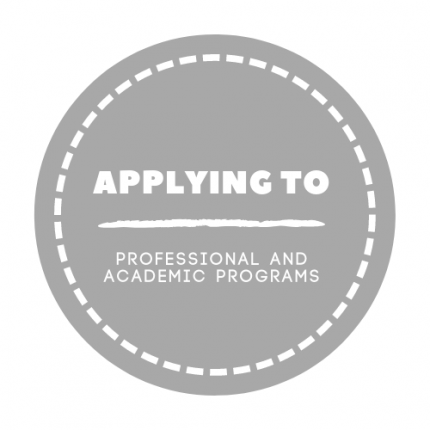Statement of Interest
Tips for Writing Your Statement of Interest
(AKA a Statement of Purpose) Statements of interest are challenging for most students to write because they demand that you think about your academic aspirations in a very concrete way. The goal is to convey to the admissions committee that you understand what the program expects and that you can situate your own research and interests within the programs context.
Think of your statement of interest as a composition with four different parts
Part 1: Introduce yourself, your (academic) interests and (research) motivations
Explain your interests — where did they originate and what exactly do you want to study
Keep this section short and succinct
Part 2: Summarize your undergraduate or previous graduate career
What kind of methodological training have you received? Have you conducted research with another scholar? What did you do? Have you written a thesis? Have you worked in a relevant field?
Include the name of people you have worked for, the title of publications or projects you contributed to…demonstrate that you have the skills to thrive in graduate school.
Part 3: Discuss the relevance of your recent and current activities
Show how going to this program is the next step based on what you were doing most recently. Make a case for yourself.
Part 4: Elaborate on your academic interests and tie them to the specific program you are applying to
Go into detail about your intended studies; show an understanding of the development and current problems facing your field of interest.
Indicate the area of your interests. Ideally, pose a question, define a problem, or indicate a theme that you would like to address, and questions that arise from contemporary research. This should be an ample paragraph!
Address how you’ve become interested in this research area, and how you’ve prepared or are preparing to address the issues within this research area (i.e. courses, research experiences, etc.)
Discuss your future goals within graduate school, and your career goals beyond that.
Research the program thoroughly. Look at all the information offered on their website and take note of professors whose research aligns with your interests, or courses and programs you will benefit from. Check the specific program; many may require you to name a professor or professors with whom you might work.
Explain how their program will benefit your goals, as well as the positive attributes you will bring to the table.
End your statement thanking the committee for their time, indicating your excitement and readiness for the challenges ahead of you.
Other things to consider:
- Start early! Give yourself plenty of time to rework what you have written, and to get help with editing.
- Demonstrate everything you’ve done with specific examples, not merely adjectives. Make it instantly apparent why what you’ve accomplished is impressive or useful in graduate school.
- Write and rewrite; your statement should not just have strong content but also flow and have continuity. Have a common theme that links everything together.
- Consider contacting faculty at the program you are applying to beforehand to build a relationship, possibly expressing interest in their research.
- Avoid cliches and quotes.
- Be clear about your future plans and how the program will help you get there.
- If you do not know your future plans, talk about the skills you posses and how the program will help you further develop them, in context of your broader future goals.
- If you have some poor marks on your transcript, you can touch on this. Briefly explain the circumstances, without making excuses. Put a positive spin on it, showing your perseverance despite obstacles. Keep this section short and succinct.
- In the editing process, read your statement out loud to yourself and others. Ask for friends and faculty to read it for you. Take a few days in between editing and reediting, it will allow you to see potential issues with more clarity.
Additional Resources:
http://grad.berkeley.edu/admissions/apply/statement-purpose/
http://web.mit.edu/msrp/myMSRP/docs/Statement%20of%20purpose%20guidelines.pdf
https://hgseadmissions.wordpress.com/2014/12/05/statement-of-purpose-telling-your-story/

